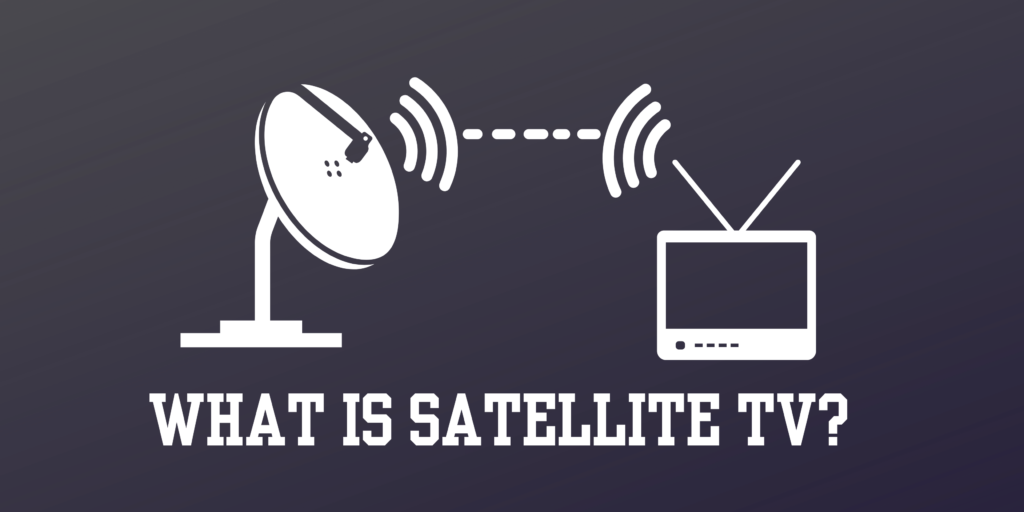Satellite TV is a technology that broadcasts TV programs directly to the viewers’ homes by sending and receiving signals from communication satellites orbiting the Earth. Its history goes back to the 1950s, but it became popular only in the 1990s when DTH began to be widely used to deliver the latest programs to people’s living rooms.
Satellite TV gave people more control over their entertainment choices and increased TV access to remote areas. It is particularly popular among rural residents who cannot access TV due to a lack of cable infrastructure.
Contents
How Does Satellite TV Work?
Satellite TV works by transmitting digital signals from a satellite located in space to a dish antenna installed in the consumer’s residence. These satellites exist in geostationary orbit and receive signals from TV studios or broadcasting hubs. The signals then return to the Earth and reach the user’s satellite dish.
Once the dish receives the signal, it is sent through a cable to the receiver box that decodes the signal and displays the pictures on the user’s TV. Further, these receivers or set-top boxes can be connected to the internet so that viewers can easily access streaming services and other online content.
Types of Satellite TV
Direct-to-Home(DTH) and Direct Broadcast Satellite(DBS)
DTH uses a small dish antenna to receive signals directly from the satellite. DBS, meanwhile, uses an enormous dish antenna to capture signals ricocheted off a satellite. Most customers in developed markets receive programming through DBS.
With paid TV services, the data stream is encrypted for the proprietary reception equipment. The proprietary equipment often consists of a conditional access module and smart card that ensures that only paying subscribers have access to the television content.
Television receive-only(TVRO)
It is an outdated technology that uses a concave dish and receiver to capture unidirectional satellite signals. Feedback transmission is not allowed in this satellite TV technology; only signal reception is allowed.
TVRO can only receive signals from a satellite at a time and has largely been replaced by DTH and DBS as they allow more efficient two-way communication.
Why is Satellite TV Used?
Wide Variety of Channels
Satellite TV offers a wide variety of channels to users from different genres, such as entertainment, movies, sports, news, etc. You can select the channels you want to subscribe to and watch them at your leisure.
Picture and Sound Quality
The technology used in satellite TV ensures signal stability and reliability. This also helps in providing users with the best picture and sound quality.
Flexibility
Satellite TV enables users to record, pause, and rewind their favorite shows. They can also be accessed on multiple devices making for a convenient watch experience. This flexibility sets satellite TV apart from other similar technologies.
Cost Effective
Satellite TV providers offer cost-effective pricing options making it the preferred choice for budget-conscious people. It provides an excellent entertainment experience compared to cable TV without breaking the bank.
Satellite TV Pros and Cons
Satellite TV Pros
✅More HD channels available
✅Exclusive content and special packages
✅Better accessibility
✅Advanced DVR system compared to cable TV
✅Easier troubleshooting
✅Cost-effective option
Satellite TV Cons
❌Satellite dish installation required at or near the residence
❌Susceptible to signal disruptions due to bad weather conditions
❌Limited availability in certain areas
❌Clear line of sight to the satellite is needed
❌Packages may have more channels than you want
Satellite TV vs. Cable TV
Satellite TV and cable TV are the two most common technologies for delivering television programming content to users. Here’s how satellite TV fares against cable TV:
Delivery Technology
Satellite TV operates via a dish that intercepts signals received from orbiting satellites. Cable TV, meanwhile, relies on a system of interwoven coaxial cables that are spread across the landscape.
Signal Quality
Satellite TV, in general, has better picture and sound quality compared to cable TV as the former is not susceptible to signal degradation due to distance from the source.
Cost Factor
Satellite TV is more cost-effective than cable TV as it has no expenses related to the installation and maintenance of cable lines.
Programming Options
Both satellite and cable TV offer multiple programming options including general entertainment, sports, news, kids channels, etc. Satellite TV, however, usually has more diverse international and specialty channel offerings than cable.
Conclusion
Satellite TV offers an array of channels and packages, HD-quality programming, and a generally stable signal quality. Most people prefer it to cable due to these factors along with the convenience and cost-effectiveness of it. However, cord-cutting has become popular with the rise of streaming services and satellite TV is no longer experiencing the meteoric rise like earlier.
Some satellite TV providers have joined the streaming universe by offering their own easy-to-use apps but it remains to be seen whether it is enough to keep them afloat in the longer run.Also read: The transformation of streaming

